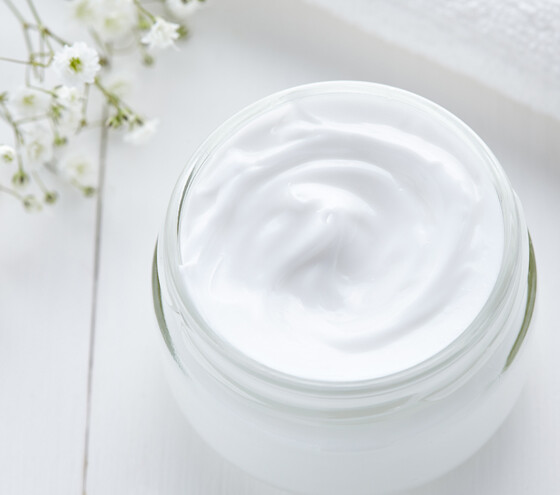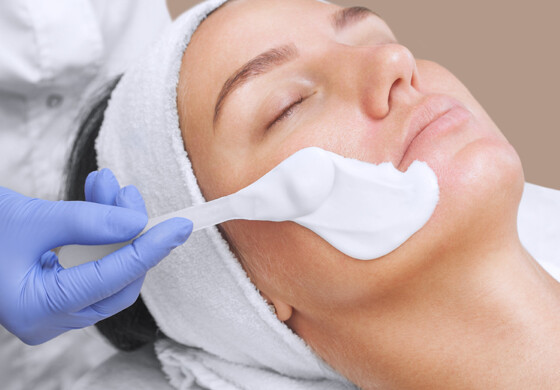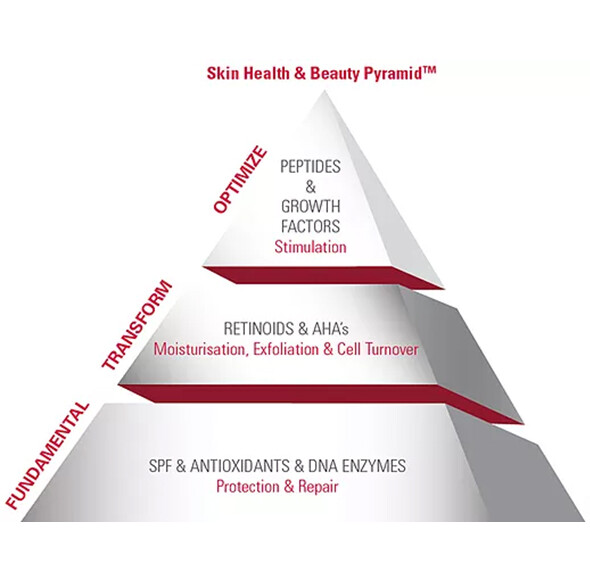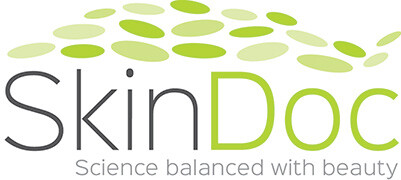Cosmeceuticals… the ins and outs
What are cosmeceuticals? This term was introduced by Dr Albert Kligman, dermatologist in 1984 from the words cosmetic and pharmaceutical. They are considered personal care products that may have a biologic effect. These products are not regulated by the Food and Drug Administration (FDA) in United States or the Therapeutic Goods Administration (TGA) in Australia. The manufacturers often test only the main ingredients and finished products in a small trial of people and rarely published their results in the peer review literature. Hence it can be difficult to establish whether the claims they make about their products are correct. Given the absence of published data, medical practitioners and consumers need to be wary of the claims made by cosmeceutical companies.
What are the goals of a cosmeceutical?
A good cosmeceutical has the following features
- Make the skin smooth and soft
- Reduce transepidermal water loss
- Provide additional skin benefit through novel ingredient technology
Skin care companies can make exaggerated claims on skin improvement based on little scientific evidence. Our aim is to educate patients on cosmeceuticals.
Patients often ask for organic products. So what are they?


Organic topical products
The key ingredients are derived from organically grown plants rather than conventionally grown plants.
Organic Products
Growers of organic ingredients must meet the following baseline criteria in order for the product to be certified to be organic (Organic Consumers Association, USA)
- Abstain from the use of synthetic fertilizers, pesticides for three years prior to certification.
- Prohibit the use of genetically modified organisims, irradiation and petrochemical solvents.
- Employ positive soil building, conservation, crop rotation and manure management.
- Avoid contamination during the processing of organic products.
- Keep records of all operations.
In USA, for a product to be labelled ‘organic’ it must contain at least 95% organic ingredients. A product with at least 75% organic ingredients can be labelled ‘made with organic ingredients’. Organic skin care products are made from organically grown plant products free of synthetic chemicals or petroleum byproducts. In addition the product must meet the standard that it excludes or minimize ingredients that can potentially be deleterious to people, animals, waterways or the environment.
Patients often want so-called natural products. So what are they?
‘Natural products’ are products derived from plants but are not necessarily organic products as they may contain chemical that act as preservatives.
Naturally derived ingredients or products may have their origins in plants but are enhanced in the laboratory.
Botanicals are products that were derived from plants or contain some plant constituents.
Why is the area so confusing?
In addition to the words organic or natural appearing on the product, words such as ‘clinically tested’ or ‘clincally proven’ or ‘dermatologist tested’ or ‘dermatologist proven’ may appear on the product as well. So what does all this mean to the consumer?
Clinically Tested
The test may be as simple as a 48 hour patch test for irritancy. It may have only be tried on a few volunteers. It may be unclear whether the finished formulation was tested or individual components were tested.
Clinically Proven
The standards used my major television networks in USA is that it requires at least two similar well-controlled clinical trials to make this claim. This is the standard for the major television networks with regards to broadcast advertising of the product.It is uncertain whether similar standards apply in Australia. Again it may be unclear whether the ingredients or the actual final formulation was ‘clinically proven’.
Dermatologist Tested
This means a single dermatologist has reviewed the clinical study and signed off on it. He or she may have simply reviewed the formula or a study report. The dermatologist may or may not have been involved in the study or analysis of the results.
Dermatologist Approved
This claim only requires one dermatologist to approve the product. The decision may be based on a wide range of factors such as safety, efficacy or simply a review of ingredients.
Dermatologist Recommended
This means a questionnaire was sent to many dermatologists and at least most gave a positive recommendation.
What are the problems we face with cosmeceuticals?
Skin care companies may perform extensive research on their cosmeceutical products but they do not publish their data. Consequently, dermatologists cannot easily access this scientific evidence to evaluate the efficacy of these products nor can we substantiate their claims. Based on little or no evidence, dermatologists who are also physicians and are therefore taught evidence-based medicine have little reason to believe any of these products actually work.
Antioxidants
Antioxidant neutralize free radicals which are highly reactive molecules which can contribute to DNA damage. Free radical damages cells by releasing pro-inflammatory molecules, increasing apoptosis and upregulate collagenase. By scavenging free radicals, antioxidants are anti-inflammatory and protect against photodamage and collagen breakdown.
The following are thought to have antioxidant properties:
- Vitamin A and Vitamin C
- Coenzyme Q-10
- Green tea
- CoffeeBerry
- Polypodium leucotomos
- Idebenone
- Green tea
Green Tea
Green tea is the most well-studied polyphenol antioxidant. It is known to reduce DNA damage, sunburn, inflammation and erythema. It contains a catechin, epigallocatechin-3-gallate (EGCG) that inhibits an activator protein 1 (AP-1) which causes UV-induced tumour production. Green tea polyphenols may stimulate cytotoxic T cells which inhibit carcinogenesis. Topical green tea extract may inhibit angiogenic factors and therefore inhibit erythema associated with sunburn.


CoffeeBerry
CoffeeBerry is derived from the fruit of the coffee plant, Coffea arabica. It is said to be rich in polyphenol antioxidants which prevent and repair damage due to reactive oxygen species.
Vitamin A
Vitamin A or retinol is the cosmeceutical equivalent of retinoid which requires a prescription. It is used to treat photoageing, acne, chloasma and scars. It upregulates collagen production and increases vascularity of photoaged skin. It reduces fine lines and wrinkles and increases epidermal thickness. It is less effective and potent than tretinoin. However it is also less irritating and better tolerated than tretinoin.
Vitamin C
L-ascorbic acid is a cofactor in the regulation of collagen production. It inhibits tyrosinase and therefore inhibit melanin production. It is also involved in wound healing.
Ferrulic Acid
Ferrulic acid is a antioxidant found in teas, CoffeeBerry and Polypodium leucotomos. It is thought to absorb UV light, stabilize Vitamin C and E and decrease thymidine dimers which lead to DNA mutations and therefore skin cancers.
Coenzyme Q-10
Coenzyme Q-10 or ubiquinone is a naturally occurring fat-soluble antioxidant found in skin that inhibits lipid peroxidation and therefore prevents damage to cell membranes. Therefore it may play a role in photoageing.
Idebenone
Idebenone is the synthetic equivalent of Coenzyme Q-10. It can penetrate the skin more effectively than Coenzyme Q-10. It may have photoprotective and anti-inflammatory effects. Idebenone has been reported to improve skin texture, hydration and fine lines.
Polypodium leucotomos
Polypodium leucotomos are antioxidants with photoprotective, anti-inflammatory and immunomodulating effects. It is only available in the oral form. No topical formulations are currently available. It has been used vitiligo, psoriasis and eczema. It may be useful in photoageing.
Peptides and cytokines
Cytokines are small molecules that communicate between cells. Peptides are short chains of amino acids. In the area of cosmeceuticals, peptides have been used as stimulants of rejuvenation and in the area of retinoid effects.
Small peptides may stimulate fibroblasts to produce collagen by inhibiting the enzyme, collagenase which breakdown collagen. Large peptides have been difficult to deliver through the epidermis. Topical delivery of botulinum toxin has been shown to increase the ability of larger peptides to be delivered into the skin.
Peptides interact with the tretinoin when applied to skin. Tretinoin inhibit an increase in metalloproteinases, enzymes involved in collagen breakdown when exposed to UV light.
Peptides may act as feedback inhibitors of metalloproteinases which breaks down collagen. Peptides also act as carrier molecules for substances such as copper. Copper is required by cells for wound healing and rejuvenation.
Cosmeceutical peptides can be divided into signal peptides, carrier peptides and neurotransmitter inhibiting peptides.
Signal peptides activate wound healing by activating fibroblasts leading to increased collagen production in vitro studies.
Carrier peptides deliver copper into the skin leading to activation of enzymes in wound healing in vitro studies.
Neurotransmitter inhibiting peptides are thought to inhibit the membrane protein involved in the release of acetylcholine at the presynaptic junction leading to muscle contraction.
Growth factors
Human growth factors are obtained from either cultured human cells or genetically engineered micro-organisms. Synthetic growth factors are made via recombinant technology using bacterial or yeast cultures. Growth factors may affect cell differentiation and proliferation. If unregulated it may possibly lead the development of cancer cells. However it has been postulated that as the protein molecule used in cosmeceuticals containing synthetic growth factors is too large to be absorbed in significant quantities through the skin it is unlikely for tumour proliferation to occur.
Synthetic growth factors may lead to reduction in fine lines and wrinkles. Clearly more research is needed in this area to substantiate these claims by cosmeceutical companies.
Botanicals
Botanicals are products extracted from leaves, bark, roots and flowers of plants. There are thousands of botanical agents used in the cosmeceutical industry. Botanicals are not processed under standardised conditions and therefore may vary in efficacy and toxicity at the time of harvest, weather and preparation of the herb and final extraction. The efficacy of botanical products are generally based on anecdotal evidence rather than scientific investigations.
Botanicals can be classified into categories based on their suggested benefits
– Anti-oxidants
Soy, Curcumin, Silymarin. Pycnogenol, Kinetin, Ginkgo biloba, Green tea, Grape seed
Soothing agents include Aloe vera, Allantoin, Witch hazel, Papaya
There is little evidence to support their efficacy. Rigorous processing prior to their inclusion into cosmeceuticals often depletes the beneficial properties of the extract.
Cosmeceuticals used for hyperpigmentation
Hydroquinone
Hydroquinone remains the most effective cosmeceutical in the management of hyperpigmentation. It inhibits tyrosinase at its copper binding site. It may also destroy melanocytes. Most adverse events are mild and include contact dermatitis which can post inflammatory hyperpigmentation and a halo of hypopigmentation. Exogenous onchronosis and permanent depigmentation can rarely occur with higher concentrations and prolonged use.
Ascorbic acid
Vitamin C is a natural antioxidant that reduces tyrosinase activity by interacting with copper at its active site. It has anti-inflammatory effects as well.
Kojic acid
Kojic acid is derived from Aspergillus and Penicillium fungal species. It is said to be the second most effective over the counter agent in the treatment of hyperpigmentation. It inhibits tryrosinase via copper chelation. Adverse effects include skin irritation. This may be minimized by combining kojic acid with a topical steroid.
Azelaic acid
Azelaic acid is a prescription product and is available in 15% and 20% concentrations. It is more commonly used in rosacea and acne. Azelaic acid is a dicarboxylic acid that has antityrosinase effects.
Licorice Extract
Glabridin or licorice extract contain flavonoids such as glabrene. They are thought to inhibit tyrosinase, cause melanin dispersion and inhibit cyclo-oxygenase, an enzyme involved in inflammation.


Cosemeceutical accelerating skin turnover
Alpha hydroxy acids
Glycolic acid and lactic acid are alpha hydroxy acids that have been shown to increase epidermal turnover and therefore thin the stratum corneum and decrease melanin in the epidermis.
Retinoids
Retinoids are derived from Vitamin A. They are available in prescription and non-prescription formulations. They increase epidermal turnover, increase epidermal melanin dispersion by inhibiting tryrosinase activity.
Cosmeceutical products
The scientific evaluation of many cosmeceuticals is lacking despite the increasing demand for cosmeceuticals. What is lacking are well controlled double blinded placebo controlled trials. Many of the reported benefits of cosmeceuticals are anecdotal. Hopefully as more reputable research is published in this area our knowledge as dermatologists in this area will improve. Our aim is to empower our patients with our knowledge of cosmeceuticals.
The decision to buy a cosmeceutical product
We will educate you as best as we can how to choose a cosmeceutical product for your skin. We will advise you of less expensive mass marketed options as well.
